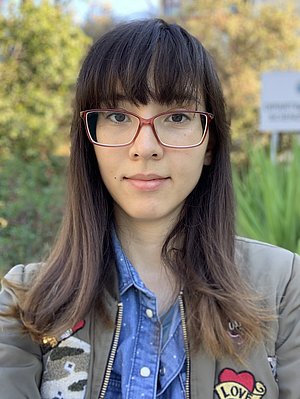Return under different circumstances
This university was my destination for my internship abroad in 2020. When I went there, I already had a clear image of what I could expect, as I already went there for an in-depth practical course in 2018 during my master program. I knew that Prof. Renzo Luisi’s lab is perfect to learn the microflow setup, which is efficient to handle highly reactive intermediates – this should be the foundation of my PhD work. I also knew some PhD students from back then and the open-minded mentality of the people there. But as everyone knows, 2020 was the beginning of the pandemic of COVID-19 and I don’t have to mention that this came along with a lot of restrictions. Especially in Italy, people were concerned about the effects of the virus and when I arrived in mid of September, the second wave hit there. As a consequence, it was mandatory to wear protection masks also outdoor and gradually new restriction came in such as shutdowns of gyms, cinemas, theatres and the closing of bars and restaurants by 6 pm. I could give more COVID-related examples, but we all heard enough stories about that. Therefore, I would rather like to focus on my lab experience in general.
Flow without limitations
The lab in Bari is different from what I was used to in Bochum. A different environment, different devices and different techniques – overcoming the discrepancies helped me to grow my skills in chemistry. My main goal was to learn the handling of microflow reactors. The classical lab approach would be “in batch”, where you use round-bottle flasks and other glass devices for reactions. The “flow approach” is a combination of syringe pumps loaded with different reactants, which are connected with tubes and get mixed in so-called microreactors. This has multiple advantages, such as a stepwise reaction control, high-resolution of reaction times, high surface-to-volume ratio, effective heat transfer and more. This is due to the easy modulation via tube length and width, as well as the flow speed and micromixer types. The technique is normally used for reactions in smaller scale and the preparation can be time-consuming in comparison to batch reactions, though it can enable reactions which are not possible in batch. Also, possible clogging of the tubes has to be excluded prior to the start of the reaction, which is why the microflow approach is only used for specific applications. I was able to learn the technique in the Luisi lab and I subsequently established the technique in my group in Bochum, where we use it for the handling of highly reactive intermediates such as organometallic compounds and carbenoids.
Grow under challenges
In the beginning it was unusual to not use a glovebox or a Schlenk line (vacuum gas manifold) for the handling of air- and moisture-sensitive compounds. But I had everything I needed for my work in the lab, so I used argon-filled balloons for creating inert atmosphere and freshly distilled solvents for my reactions. By having a limited selection of most glass equipment, electronical devices and also gloves, I quickly learned that good communication and maintaining a clean workspace are the key in the lab. It always is but these skills can get lost faster as you would assume! Additionally, I learnt to adapt fast to new situations and being flexible. For instance, the measurement of NMR spectra (my analysis of choice) would usually be done once a day in the late afternoon instead of every time I wanted. So, I scheduled various reactions simultaneously and finished everything so, that I have my NMR samples ready for the afternoon. Hence, I could effectively use my time and I had a “deadline” for the samples to work towards it. Also, the office workspace was limited but we would rotate around in time or with the chairs, so everyone could do their work. Finally, at the end of each day, we would wash all the piled dirty glassware together instead of using a (lab-)dishwasher or base baths. Having the company of my lab mates, talking with each other as the workday is going to finish, was a great way to settle down from the tasks of the day.
Looking back to my time in Bari, I did not only learn a certain technique for the lab – I also developed personally, by learning new things and adapting myself to new situations fast, by trying to communicate without speaking Italian and by dealing with a pandemic in an environment without close persons. I recommend everyone to open up to new experiences with an optimistic attitude. And maybe you also have the chance to find a secret love – like my love to Foccacia Barese!
------------------------------------------------------
About the author





